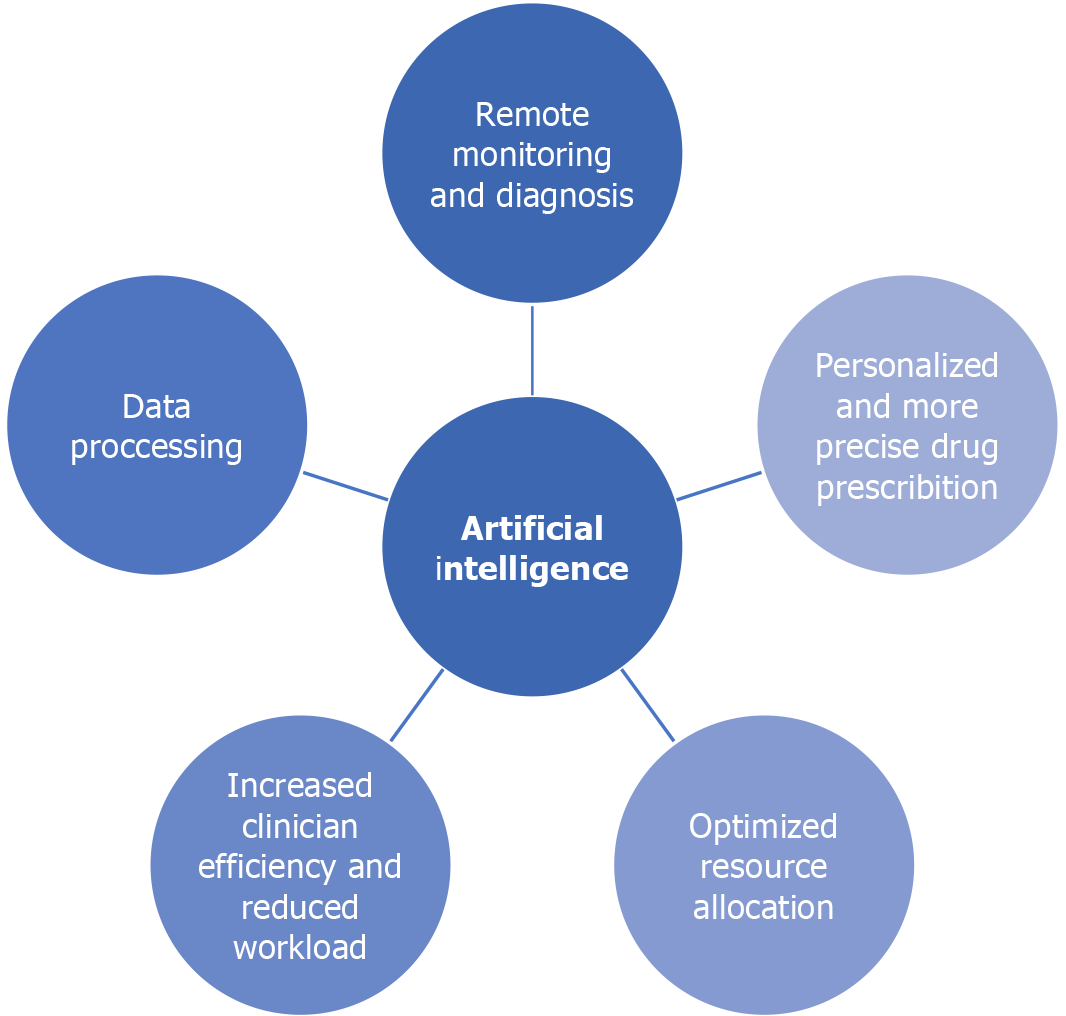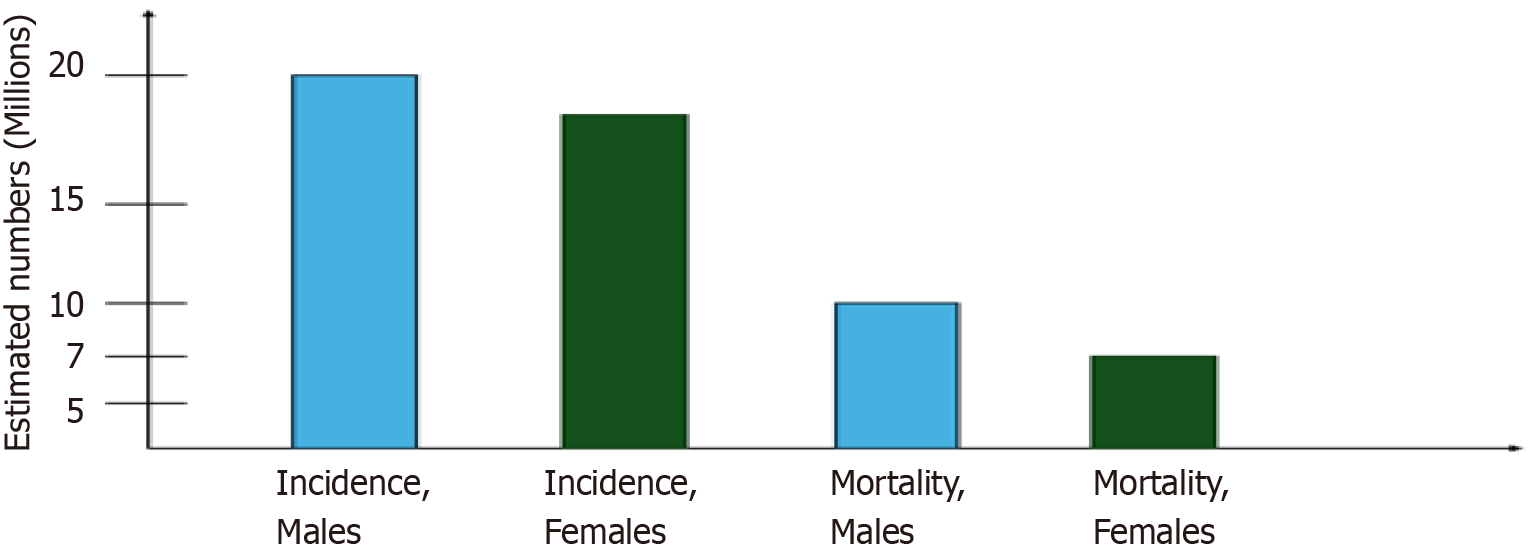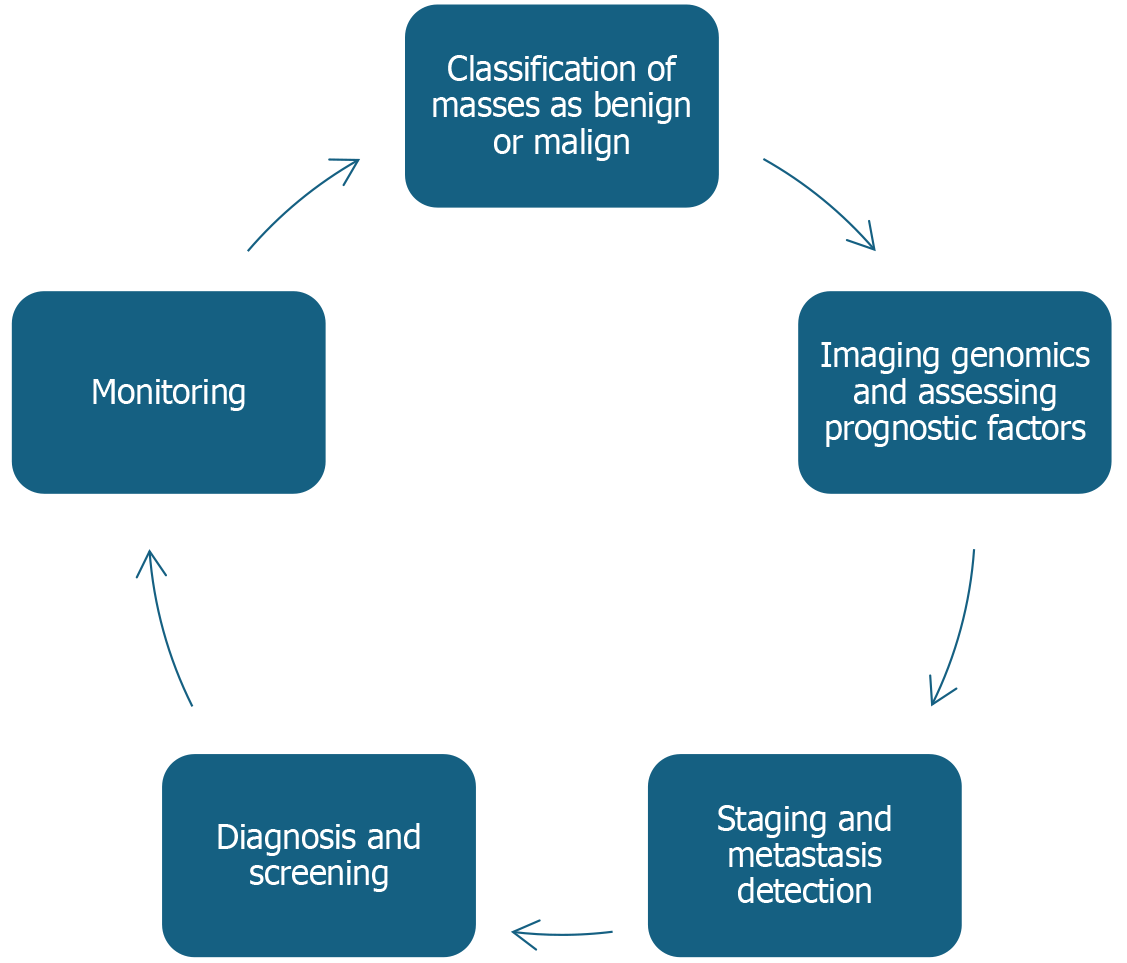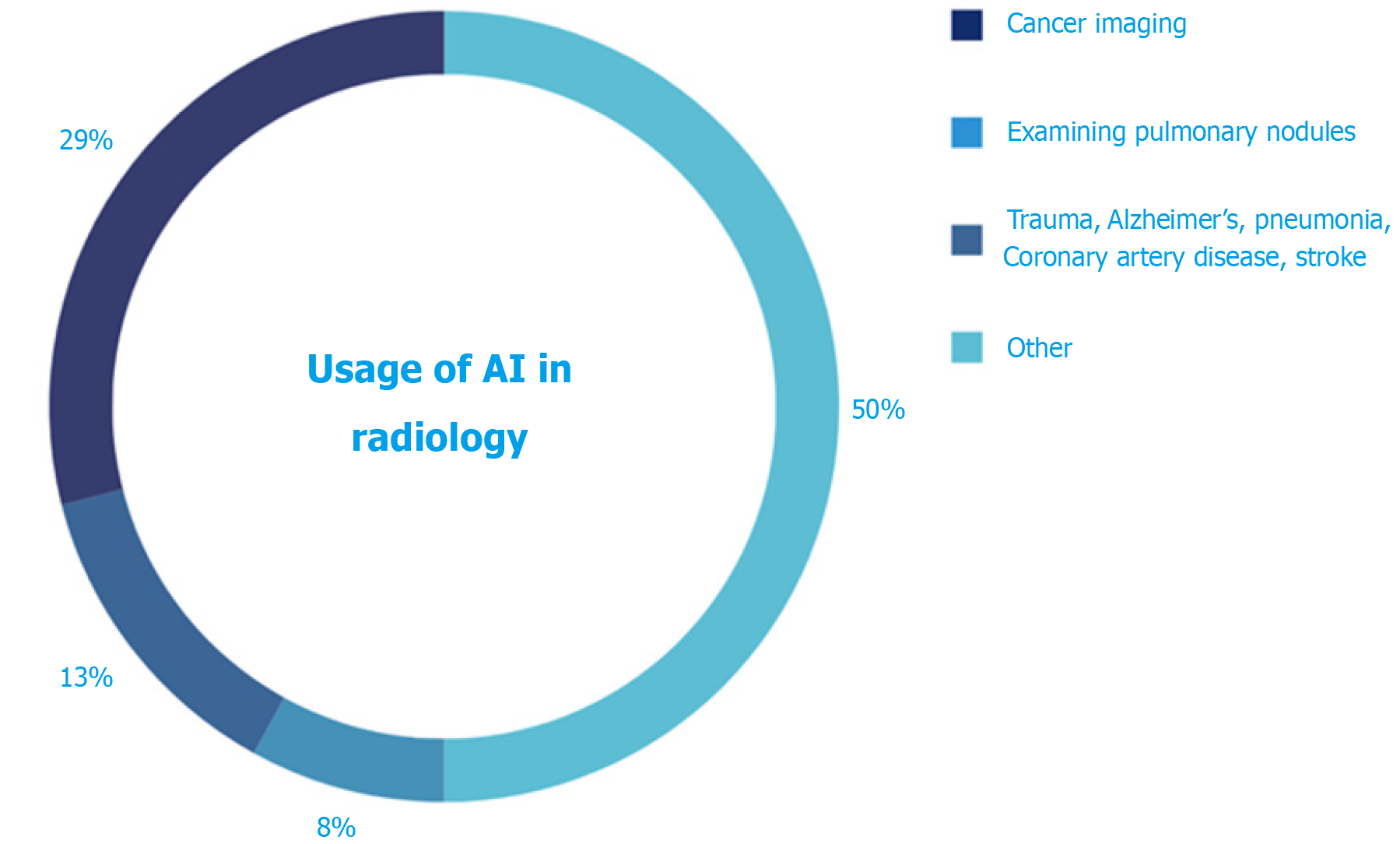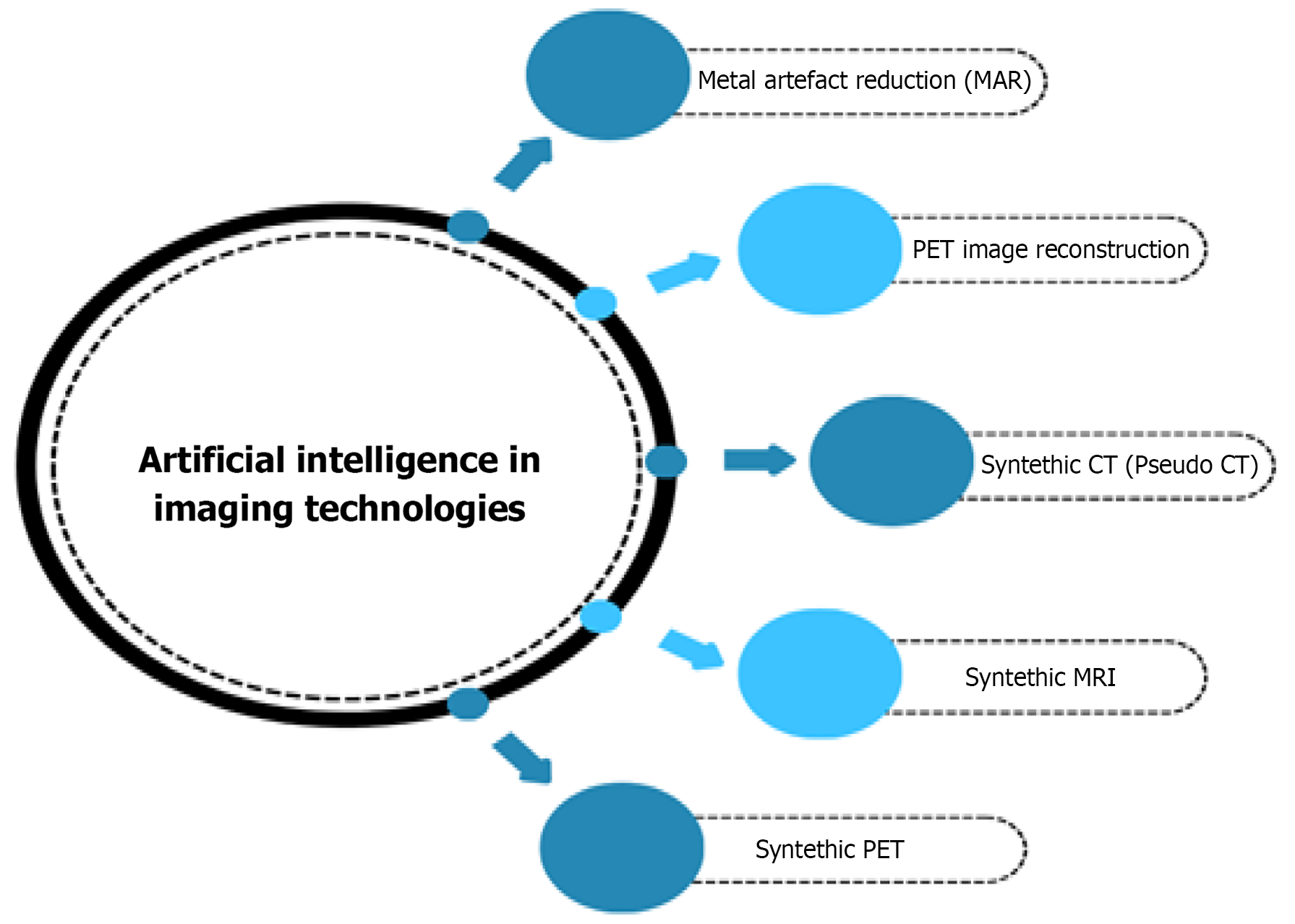Copyright
©The Author(s) 2025.
World J Methodol. Dec 20, 2025; 15(4): 106854
Published online Dec 20, 2025. doi: 10.5662/wjm.v15.i4.106854
Published online Dec 20, 2025. doi: 10.5662/wjm.v15.i4.106854
Figure 1 Benefits of artificial intelligence in medicine.
When examining a patient, artificial intelligence can work on the patient’s data to search for possible diagnoses by making entries of the patient’s complaints and assisting doctors.
Figure 2 Estimated numbers of cancer cases in 2050.
By the time of 2050, cancer prevalence was predicted to almost double in Asia and in Europe.
Figure 3 Artificial intelligence in cancer screening.
New artificial intelligence technologies can be the key to understanding cancer’s pathophysiology and carrying the treatments into the next step.
Figure 4 Usage of artificial intelligence programs approved by the Food and Drug Administration in radiology.
AI: Artificial intelligence.
Figure 5 Artificial intelligence use in various imaging technologies.
CT: Computed tomography; MRI: Magnetic resonance imaging; PET: Positron emission tomography.
- Citation: Metin İ, Özdemir Ö. Artificial intelligence in medicine: Current applications in cardiology, oncology, and radiology. World J Methodol 2025; 15(4): 106854
- URL: https://www.wjgnet.com/2222-0682/full/v15/i4/106854.htm
- DOI: https://dx.doi.org/10.5662/wjm.v15.i4.106854













